China’s wine scene has moved on rapidly in the last few years. This Silver Heights vineyard in the city of Yinchuan is now a wine culture center. The vines are already buried in the soil by mid-November. Photo by Wu Xingwei.
Located in the central northwest of China, Ningxia Hui Autonomous Region has been developing its wine industry with “China speed”. Only five or six years ago there were far fewer wineries in operation, and those that were making wines were still learning the intricacies of producing quality wines.
Today the number of wineries in Ningxia, which is 1,000 kilometers from Beijing and situated on an open plateau 1,000 meters above sea level, has mushroomed to nearly 100, and there are at least another 100 waiting for government approval to start producing wines. Some are modest, some lavish, some bizarrely western, and some ingeniously modern and unique. And they are no longer a glamorous facade – the wine that comes out of many of these wineries is now the real deal. Yes there are still some problems with formula winemaking, but the road to great wine has been paved.
This is our first close-up review on Ningxia, which features around 130 wines from the region, including a few tasted in the wineries: Helan Qingxue, Domaine des Aromes, Legacy Peak, Lilan Winery, Chateau Mihope, Xige Estate and Silver Heights.
Zekun Shuai, associate editor d in Beijing, tastes 130 samples from Ningxia for this report.
Most producers sent samples on request (including a few purchased samples) as their wines were already on our radar. The results delivered just a few disappointments despite a relatively high number of corked wines – six bottles in total. Considering that almost one-third of the wines now use DIAM corks, that cork taint rate is very high, and this is a noticeable issue here. Winemaker Gu Jiawei from the Ruwen winery explained that the natural corks exported to China from Portugal and Spain often turn out to be their lower-quality closures, which is why many serious producers have turned to DIAM corks over the last few years. Ruwen is now experimenting with different stoppers, including one made of bamboo that also blocks TCA.
Of the 130 samples tasted, many found a comfort zone within a range of 88-90 points, but only 13 wines made it to 93 points or above. These were wines with real character instead of just being flattering and generous (especially in sweetness), which is a commonly found quality from the reds in Ningxia.
Some would say the “sweet fruit” is what Ningxia red wine is about, which has to do with the climate and terroir. Certainly, the climate gives a rich, fruity context to varietals like cabernet and merlot, but I couldn’t help wondering if this was also just an excuse for not trying hard enough or for picking late to fit the expectations of the market, something that will have an even bigger impact on the style than terroir and climate. After all, the top wines in this report have little problem with that cloying character. Nevertheless, after tasting 130 wines Ningxia has lived up to the expectations given the numerous medals the region receives year after year. But there is still a lot of work to do if wineries want to be rigorous and unremitting with quality, and aspire for more in the future.
NINGXIA’S RICH, GENEROUS RED STYLE DOTTED WITH NEW DISCOVERIES
Today, Ningxia makes solid, rich, yet heady reds with that “flattering” sweetness. Undoubtedly, the fruit generosity enhanced by a supple mouthfeel thanks to high alcohol (some over 15.5%) and glycerol is very New World-like, and some also left a bit of residual sugar around 4-5g/L to make it even more appealing to the inexperienced, new consumers. As cabernet sauvignon struggles to ripen here (when it does, without going overripe, it makes beautiful wines), many producers started to harvest late to make sure the wine does not have an unpleasantly lifted bell-pepper character, something common 10 years ago. “Most Chinese consumers don’t like acidity and tannin” was a common comment when I spoke to producers, and being Chinese myself, I know this is the case for most consumers who just started drinking wine.
But to keep the balance in check and stabilize the wine, many producers tend to acidify the wines in hot vintages. It probably explains why some wines tasted rich, even jammy, yet have a tart attack on the palate instead of unleashing the juicy character from the fruit.
As this style appears to be well received in the market, some producers follow this formula and neglect styles that are more authentic and complex. But the top producers in Ningxia understand this issue, and tend to limit this category of simple, fruity wines to their entry-level labels to attract new consumers. Some also avoid this “sugar coating” of their wines. Zhang Jing is one of them, the co-founder and winemaker of the leading estate Helan Qingxue, who told me that she wanted her wine to have real depth.
- Zhang Jing, winemaker and co-founder of Helan Qingxue makes some of the most refined, classy yet modern cabernets and precise and fresh chardonnays in Ningxia.
- Emma Gao, winemaker at Silver Heights, works like an artist driven by intuition and insight.
“I want my wines to show some depth at youth, which helps them age. We’ve also cut acidification since 2017, as we feel it is best to keep the acid as it is. As we always pick early, the acid is not an issue for us,” said Jing. Both red and white, her wines already show a restrained style with freshness and subtlety, rendering a classy and precise feel with a reserved modernness to their Old-World sensibility.
Also made by a female winemaker, Silver Heights produced an array of wines that showed the winemaker’s intuition. “Precision” is probably not the best word for Emma Gao, the winemaker who, like her father Mr. Gao Lin, has a vision for wine and the region. Emma Gao’s wines are full of nerves with an authentic and unfettered personality, a style that I would describe as a combination of Ningxia’s true generous fruit with her winemaking know-how. “It is like our Ningxia people,” said Emma in a soft voice, referring to the down-to-earth, hospitable personality of the local people who might get offended if their guests won’t stay for the local roast lamb.
Today, Emma also wants to make wines as authentic and natural as possible. To pay more respect to nature and to make vines healthier with a better “immune” system, her vineyards were converted to biodynamic farming in 2017. “We have worked hard to understand our land better so the wines could have soul and less manipulation,” said Emma, and their new line Jiayuan (Homeland) made with wild yeast and low dosage of sulfur reveals her aspiration to produce wines that highlight the typicity of the grape variety as well as the place.
- Jade Vineyard panned out with the its Messenger 2016, a wine with superb complexity, length and richness but still managed to keep poise.
- Ding Jian(left), owner of Jade Vineyard with winemaker Zhou Shuzhen (right).
When to start the harvest is crucial but tricky decision in Ningxia, as the growing season isn’t long enough despite a vast diurnal temperature difference and plenty of sunlight which gives a high amount of sugar/alcohol. So, it can be a bit hit or miss. Either you have lifted greenness if picked too early without attractive phenolic ripeness, or you have overripe fruit and very high potential alcohol with low acidity if picked too late. But if cabernet sauvignon has found a sweet spot for both ripeness and freshness, these wines from Ningxia are not only rich and welcoming but also classy, fresh, and refined. Our top cabernet wines in the list showed this character with a sophisticated application of oak barrels. In fact, many top wines come from barrel selections, such as the magnum Silver Heights’s Emma’s Reserve and Helan Qingxue’s Special Reserve 2016.
Among the top wines that scored 93 to 95 pts, most are cabernet sauvignon or Bordeaux blends, and many come from my four top producers, which are Helan Qingxue, Silver Heights, Kanaan Winery, and the fledging Jade Vineyard, whose wines blew me away when I first tasted them in 2016. Today, I believe these four producers are leading the game in Ningxia, and there is a fun fact with these producers: they are all led by female winemakers/owners, and two of them (Jade Vineyard and Kanaan) are consulted by Zhou Shuzhen, an experienced and well-respected independent winemaker today in Ningxia who also consults for wineries like Li’s, Legacy Peak, and Copower Jade.
Jade Vineyard Ningxia Messenger Reserve 2016 (95 points) was my top wine among the 130 bottles. It shows how good Ningxia’s cabernet sauvignon can be when the producer gets it right. The successful 2016 vintage also helped forge a compelling interplay between ripeness and complexity, delivering a super long and hedonistic wine with a dense, serious yet superbly polished tannin structure. Helan Qingxue, Kanaan Winery, and Silver Heights all delivered a few cabernet sauvignons/Bordeaux blends that scored 94 points, showing cabernet sauvignon’s potential in Ningxia when it is perfectly ripe, and not over the top.
What surprised me in my tastings were three pinot noirs and a few other grapes, including syrah, viognier, and even malbec. For pinot, Deng Zhongxiang, an aspiring winemaker educated in Burgundy who consults for several wineries including Lansai and Domaine Charme, told me that it is indeed a challenge to make excellent pinot noirs from Ningxia, but not impossible.
Silver Heights made a 93-point pinot noir in 2017 under its new line JiaYuan, which shows the typicity of the grape and terroir. Photo by Wu XingWei.
“Ningxia can be too hot for pinot noir with a shorter growing season, but despite these odds, I want to show the world it is not impossible, and by harvesting early, we don’t lose the natural acidity and the subtle characters of pinot noir,” said Deng. His Lansai Ningxia Yinchuan Hong Pinot Noir 2017 (92 points) was an excellent example of pinot showing ethereal fruit, elegance and details, even if it is d in a warmer context. Silver Heights Ningxia Jiayuan Pinot Noir 2017 (93 pts) was one of the highlights that showed the cloudy, sous-bois characters despite some spicy new oak, followed by a firm backbone of acidity on the palate in a linear, almost demandingly way. Helan Qingxue Ningxia Jiabeilan Baby Feet Pinot Noir 2017 (92 pts) was a little more compact and richer, underscoring the depth of fruit and color, with a floral and slightly stemmy character bringing out freshness in a broad and cohesive palate.
Together with Chateau Chanson, whose 2017 pinot noir we tasted earlier, these producers might turn your perception of Ningxia around, given their record of producing excellent wines from one of the finest yet most finicky grapes in the world. The best pinots that I came across certainly cleared my doubt about Ningxia’s future possibilities. The question now isn’t if Ningxia has the potential for more elegant grapes but rather if the producers/winemakers have the willingness and commitment to nurture them; whether they dare travel on a difficult and offbeat road, such as producing an excellent pinot noir.
My other highlights from Ningxia were dotted with a few grape varieties. We already know that marselan is strong in China, with the best often showing a deep, brooding color, with tarry, spicy dark berry fruit, and blue flower characters. Domaine Franco-Chinois from Hebei makes one of the most essential wines out of it. In Ningxia, the popularity of marselan is also growing, and some exude an exotic black pepper, lavender, and almost dried lychee character, although lesser examples went a little too far for ripeness, letting too much dried fruit, alcohol or jamminess jump out. The best marselans from this report came from Jade Vineyard and Domaine Charme: both are barrel-samples from 2019, an outstanding vintage for Ningxia.
- Liang Ning, who used to work for Helan Qingxue, now takes care of his family business Sweet Dew Vineyard and made some outstanding syrahs.
- A few excellent wines tasted in the first tasting day. Domaine Charme’s Viognier was mind-blowing.
Besides marselan, syrah is on the rise, too. Chateau Rong Yuan Mei is another winery consulted by Deng Zhongxiang and makes an impressive syrah and an excellent malbec. The latter might become popular in the region considering its high altitude and dry climate that reminds people of Mendoza. The young winemaker Liang Ning showed how enticing syrah can be in Ningxia with his Sweet Dew Vineyard Ningxia Syrah Limited Edition 2017 (93 pts), a very promising bottle that knits up intensity and balance within its focused blue fruit, spicy oak, and a drizzle of tangy black pepper spices. Li’s, a winery with a real estate background, is another producer to watch for syrah.
While white wine is not on every producer’s radar as China is still more of a red wine market, if wineries want to produce one, chardonnay is the most-picked grape. That said, Domaine Charme and Chateau Mihope have made some eye-opening viogniers showing the floral, aromatic quality and the stature of the variety. Try Domaine Charme Ningxia Viognier 2019 (93pts) for its zingy nose full of lemongrass, citrus, and peachy aromatics that are streamlined on the palate with a vibrant streak of acidity, which leads the fruit to a more subtle, chalky finish.
These wines also showed how younger winemakers that are gradually taking things beyond what they learned from their mentors, and who have dotted Ningxia’s cabernet canvas with new varieties, ideas and interest, are injecting vigor to a region that is not much older than themselves.
As wine blooms, Ningxia now plans to get wineries more involved in tourism. Producers’ ability to receive tourists is also taken into account in a young classification that the government has run since 2013. And if you are planning a trip to Ningxia some day, there is one producer that you should not miss. An hour’s drive from Yinchuan to the south, you will find the brand-new Xige Estate, a hidden gem in the Gobi Desert, with its stunning architecture and convincing wines. Today, this ambitious and modern winery with an avant-garde design holds some 1,300 hectares of vines aiming to produce quality wines in quantity. Among them, Xige Estate Ningxia Jade Dove Cabernet Gernisht Single Vineyard 2018 (93 pts) shows how compelling cabernet gernisht can be when it fully ripens in Ningxia, as, for a long time, the variety was considered a no-go with its strong herbal, leafy characters and problems with viruses. Li’s also produced an outstanding example with its Li’s Ningxia Family Selections “Justice” Cabernet Gernisht 2017 which received 92 points, a delicious wine showing varietal typicity underlined by its dried herbs and spicy fruit that pinpointed to the finish. It is also one of the best values in this report, as I bought it at a price of RMB 199($30), which is extraordinary for Ningxia with most of its quality wines sold for much more, many around RMB 300-600 ($45-$85) at least.
- Independent winemaker Liu JIanjun is one of the young, rising stars in Ningxia.
- Deng Zhongxiang (right), who studied in Dijon (left: Jordi Ballester, a teacher/researcher in University of Burgundy), now is an active consultant for six wineries in Ningxia.
“Cabernet gernisht needs to be picked late enough as it is difficult to ripen,” said Liao Zusong, a young and extremely committed winemaker of Xige Estate, who previously worked under Bass Phillip and now oversees the winemaking team along with the owner Zhang Yanzhi, a Bordeaux-trained oenologist who started this aspiring project after his successful business with Penfolds Max’s. “We have around 1,000 hectares of vines over 23 years old,” said Liao, which arguably gives them an edge in more concentrated fruit.
In Ningxia, a 23-year-old vine is already considered old. “Legacy Peak, a boutique winery located within the heritage park of Xixia King’s tomb, also owns hectares of these much-coveted old vines planted in 1997. Their vineyards are just miles away from the Eastern foothills of Helan Mountain on a higher spot in the region above 1,200m in altitude.
Another problem for Ningxia, indeed for most vineyards in northern China, is that when the vines get old enough, vine burying, a costly vineyard management that is still the most effective protection for vines to survive mercury, becomes a challenge. Old vines are more likely to be snapped in this rather brutal practice that usually starts in early November before the soil freezes, even if the vines have been trained to facilitate this process.
- Xige Estate outshines with its modern and chic design, edge-cutting technology and a dreamlike cellar. Photo by Wu XingWei
- Chateau Mihope owned by the Chinese home appliances tycoon Midea Group is a strong contender for quality wines from Ningxia
“It can be a problem for vines on their way to 30 years old when the trunk is too hard and thick to endure the burying,” said Liang Ning, winemaker of Sweet Dew Vineyard.
However, Liao Zusong of Xige Estate told me they were planning ahead. “We have nurtured new shoots for the old vines that will become the trunk in the future, so we can cut off the old trunks, if necessary, but keep their roots.” Still, the life expectancy of vine is not predictable for those regions that need to bury the vines in the northern part of China. Having said that, in a freezing morning after snow, when your eyes lay on the lonesome stony poles standing like soldiers that guard an “empty” vineyard blanketed with soil and snow, there is also something special to this, a real beauty of silence and solemnity.
NINGXIA’S FIRST GROWTH IN LABOR
As an embryonic wine region, Ningxia could not have accomplished so much in such a short period (10-15 years) without the help of the local government, whose involvement also encouraged investment from other industries, from energy enterprises and home appliance tycoons to real estate developers. This brings us back to Ningxia’s Grand Cru Classification, an official ranking since 2013 which now gathers 37 wineries in its 2019 updated list. While speediness is not news for China, the government wants to focus on long-term development by encouraging producers to make better wines, which was why the grand-cru system, a classification learnt from Bordeaux, was created. However, a few prominent names are missing.
Most winemakers I talked with believe the grand cru classification is applaudable for an emerging wine region like Ningxia; at least the pros outweigh the cons. Yet other voices also exist. “It is premature and way too early to rush into a ranking of producers now. Compared to Bordeaux, Ningxia is a small baby. What if a grand cru winery selected today didn’t understand their soil and mispositioned itself in the market, and it had to shut down one day? It’s a good thing to do for sure, but we cannot rush it,” said Gao Lin, as we sipped some hot tea in his Silver Heights’ cultural center, which was still under construction. As a leading boutique estate in Ningxia and a family business, Silver Heights is not on the grand cru list, and it’s possible it will remain separate for a long time. Curiously, another extremely serious producer, Jade Vineyard, was not on the 2019 list either. Perhaps, as Gao Lin said, it is not the time yet.
“There should be some self-examination, and different voices should be heard, or at least we need to calm down and think about it before we get heady and everyone jumps in with both feet,” added Gao Lin.
Mr. Gao Lin had a point. Winemaking in Ningxia has only just left the starting line and there’s a marathon ahead. Many winemakers also told me that only a few wineries in Ningxia are profitable, and many still struggled to survive.
Deng Zhongxiang, however, has few misgivings and said he is a “whole-hearted supporter” of the classification. “With so many producers and brands now, the grand cru classification is like a Ningxia wine guide, and it certainly helps consumers pick out better wines from the myriad of producers and brands. Of course, there are imperfections in this system that have drawn a lot of criticism, but it is a good start, and isn’t almost any greatness started out amid criticism and skepticism?” laughed Deng.
- Helan Moutain after the first heavy snow in November, 2019
- Vines were buried in the soil at Legacy Peak, the only winery located within the heritage site of Xixia King’s Tomb just miles away from Helan Mountain
The evaluation of Ningxia’s grand cru wineries is d on the government’s official document (in Chinese) of “Interim Measures for the Evaluation and Management of Classified Wineries in the Eastern Foothills of Helan Mountains Wine Region,” which stipulates the rules. Wineries are subject to assessment every two years in different aspects such as vineyards (wineries must own vines over five years old), yield, price, sensory evaluation through a jury tasting, medals and the market value of the brand (including the reputation of the winemaker), wine tourism reception ability, etc. Each winery eventually receives an aggregated score after which it may receive promotion/demotion. New candidates could be brought in and existing ones could be removed, too. “It is a pretty dynamic list,” commented Deng.
In a webinar last year, I remember Emma Gao said that Silver Heights is still a family business, and they don’t have the reception facilities required to be considered for the list. Tiny, but serious and quality-driven producers such as Domaine des Aromes might also get sieved out in this “Hall of Fame”. More importantly, it comes down to each producer’s drive and their willingness to deal with the administrative side of honors and recognitions, things that might not happen in a vineyard or cellar, but instead in an office or in front of a computer filling out application forms. After all, producers have to apply for the entry in the first place.
During my visit to Chateau Mihope, a property owned by the Chinese electronic appliance tycoon Midea Group, its winemaker Zhou Xing also shared some of his insights on the classification.
“The focus of each growth is slightly different. For the 5th growth, the key is the vineyard, which requires wineries to have their own vineyards of vines over five years old. The 4th growth also considers vinification upon viticulture. For the 3rd growth, you also have to include the market, price, and reception facilities. For the 2nd growth, brand image and reputation are considered, too,” said Zhou.
With the highest aggregated score of 150.1 points among the 4th growths, Chateau Mihope seems to be a strong candidate for a 3rd growth promotion. Currently, three producers sit at the top of the pyramid (the 2nd growth): Chateau Yuanshi (180.92pts), Helan Qingxue (180.42pts), and Chateau Bacchus (174.73pts). The next update of Ningxia’s grand cru list is expected to come out soon this year, and for the first time, Ningxia may have a chance, if they will, to roll out the red carpet for its first 1st growth winery.
THE TOUCHSTONE VINTAGES
My trip to Ningxia in November was certainly productive and rewarding. There are so many stories to account from each producer and we can’t cover them all in a single report. Yet, there is no better narrator than a bottle of wine itself which recalls for us the four seasons in a single year. For Ningxia, there were, of course, some ups and downs for vintages, but the top producers have worked hard to stay consistent.
“2016 should be more unanimous among producers marked by its good ripeness. But I think vintages like 2015, 2017 and especially the lesser 2018 are the better touchstones if you really want to see what the winery is capable of,” said Zhang Jing of Helan Qingxue.
- In 2014 Mr. Gao Lin walks through his small vineyard in the city of Yinchuan where he had it planted to table grapes. Now this vineyard has become a part of the cultural center of Silver Heights.






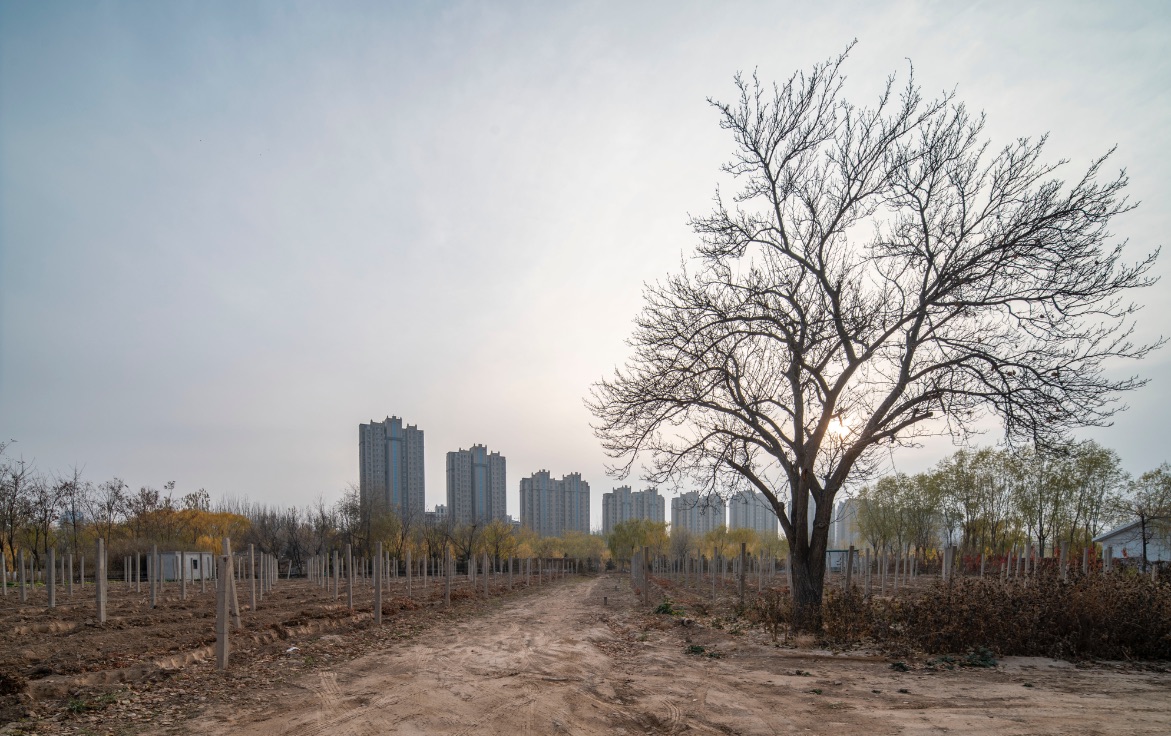
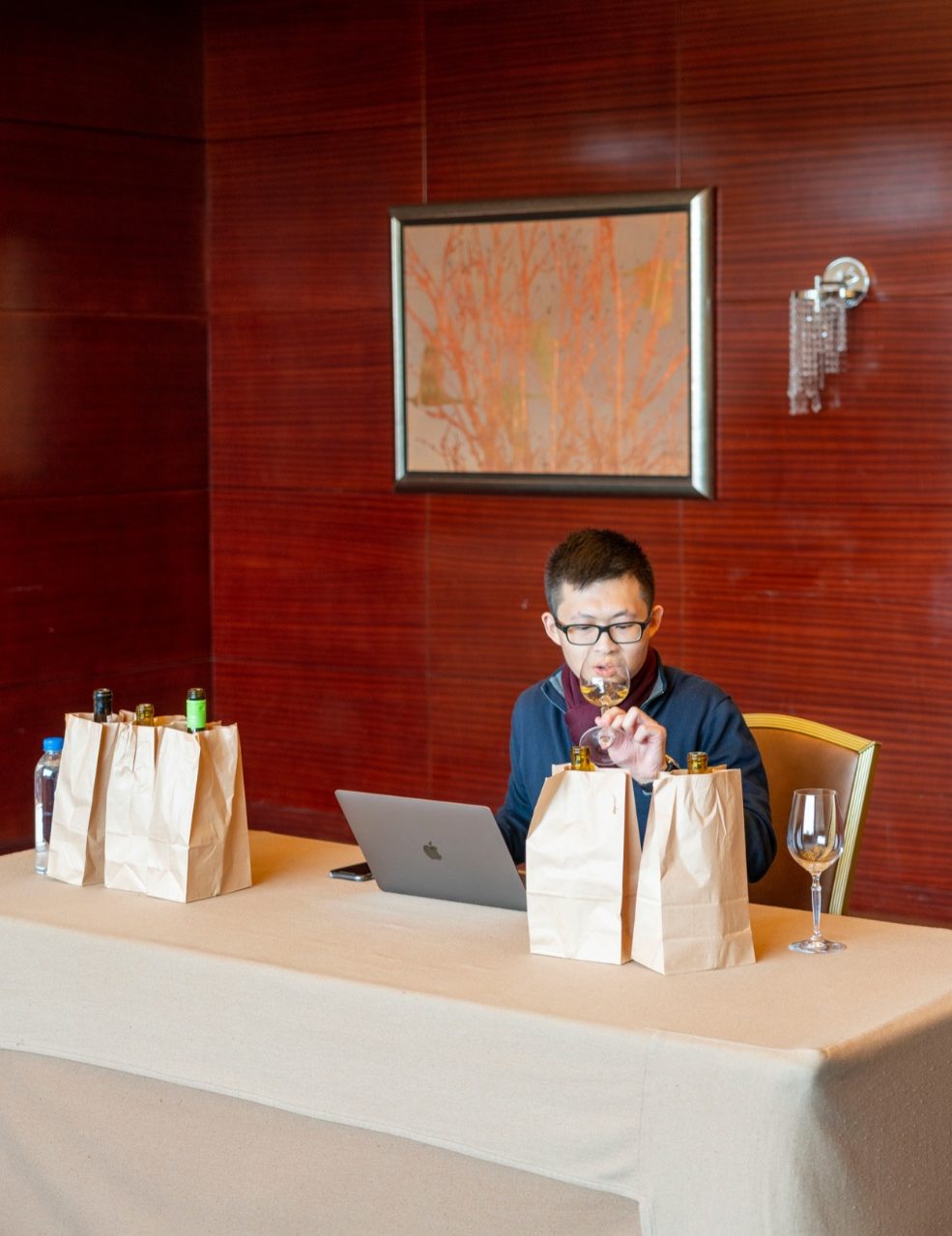
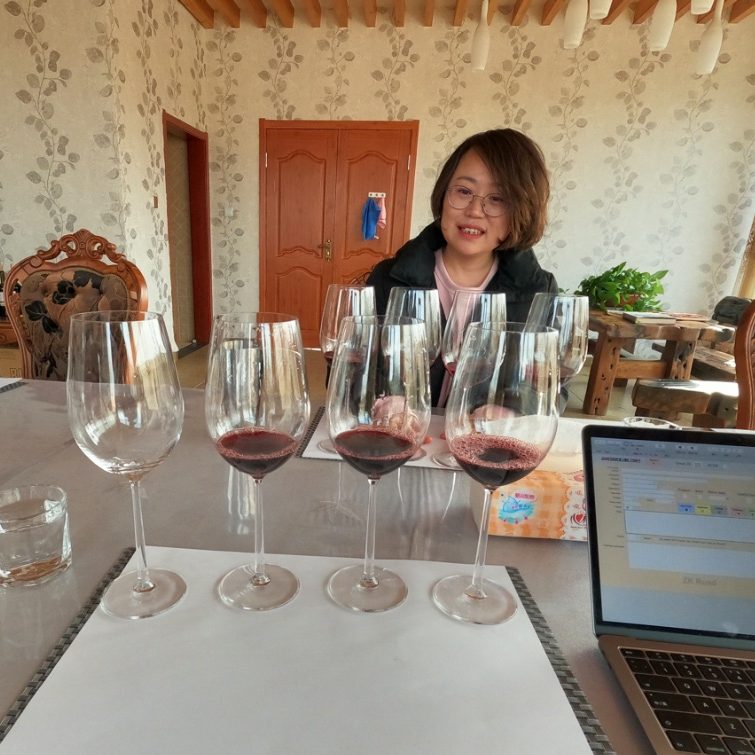
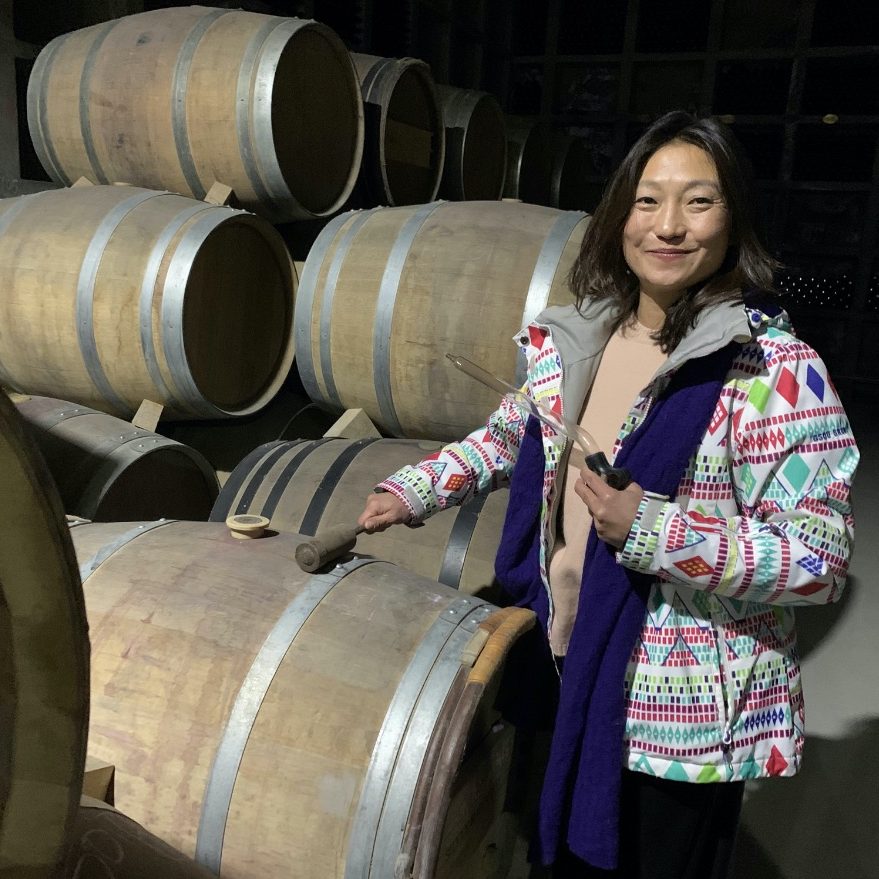
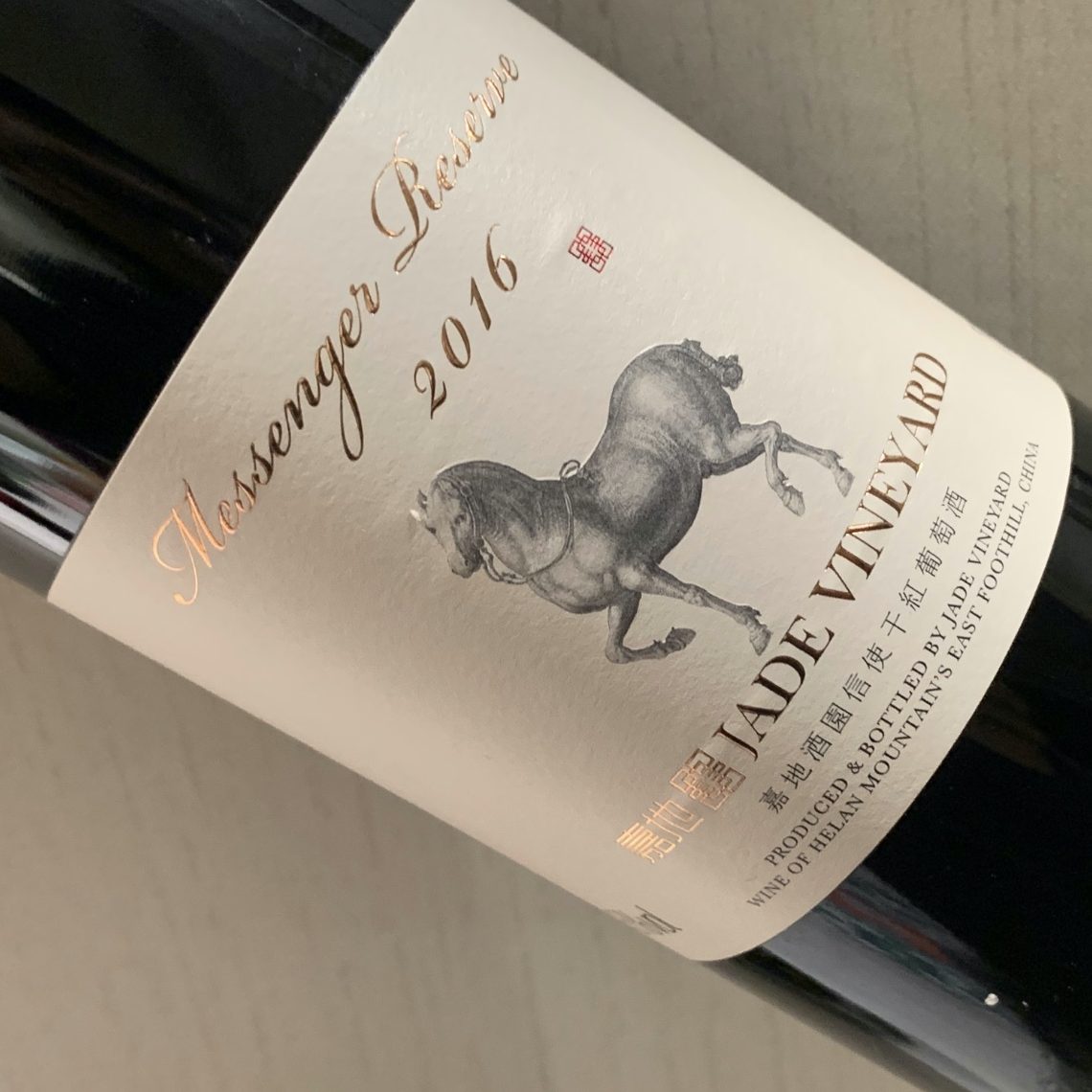
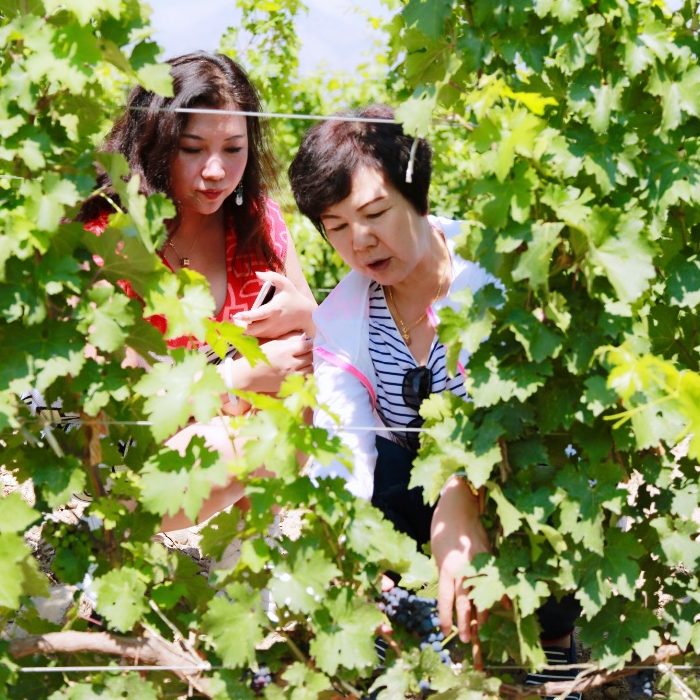
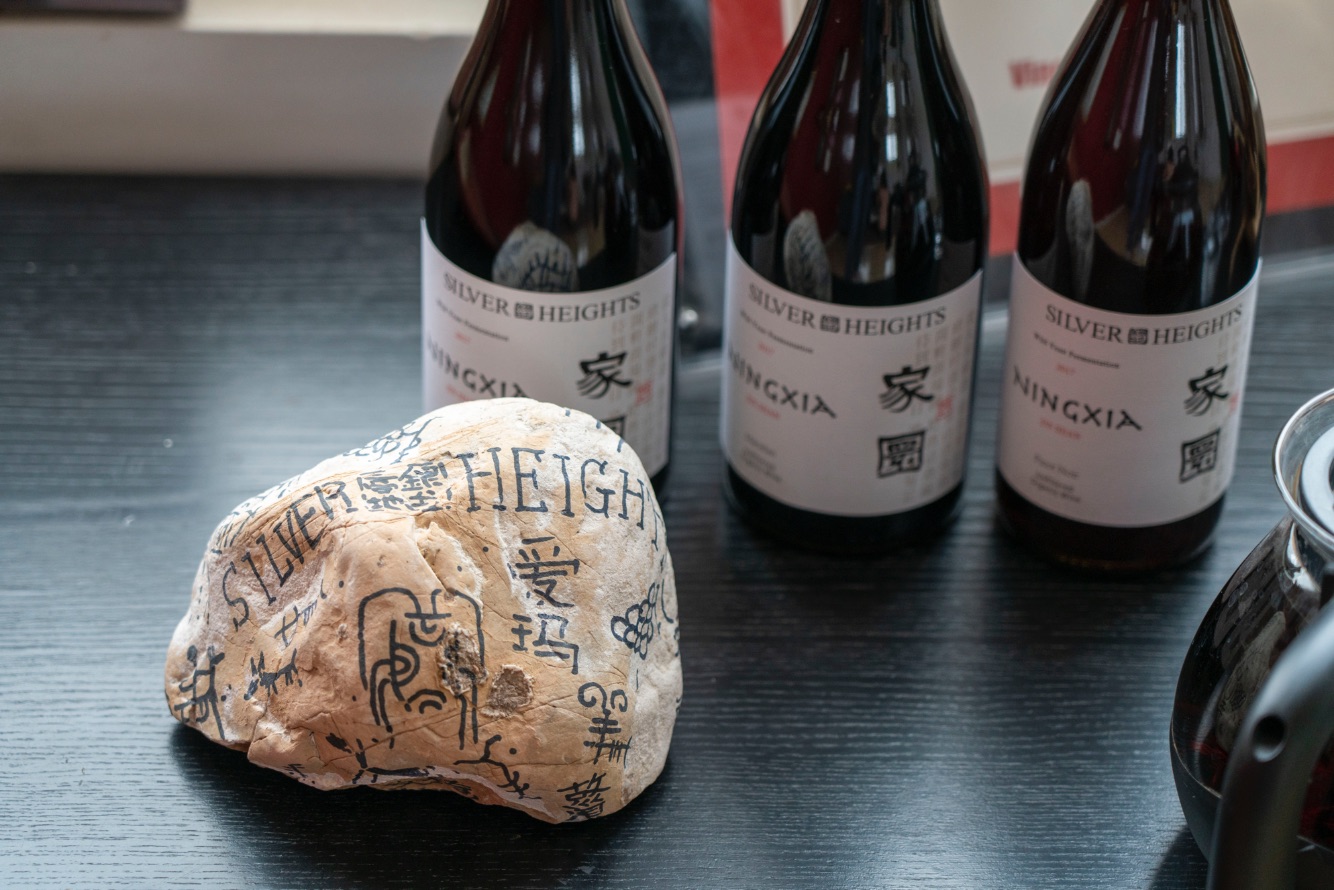
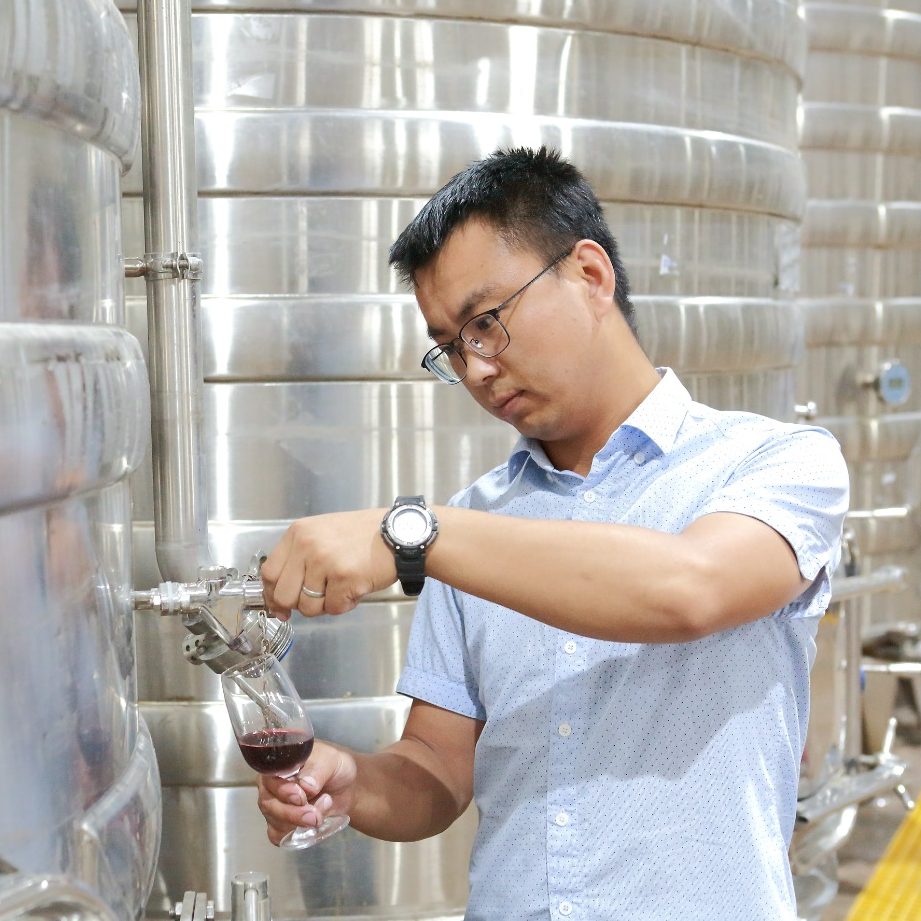
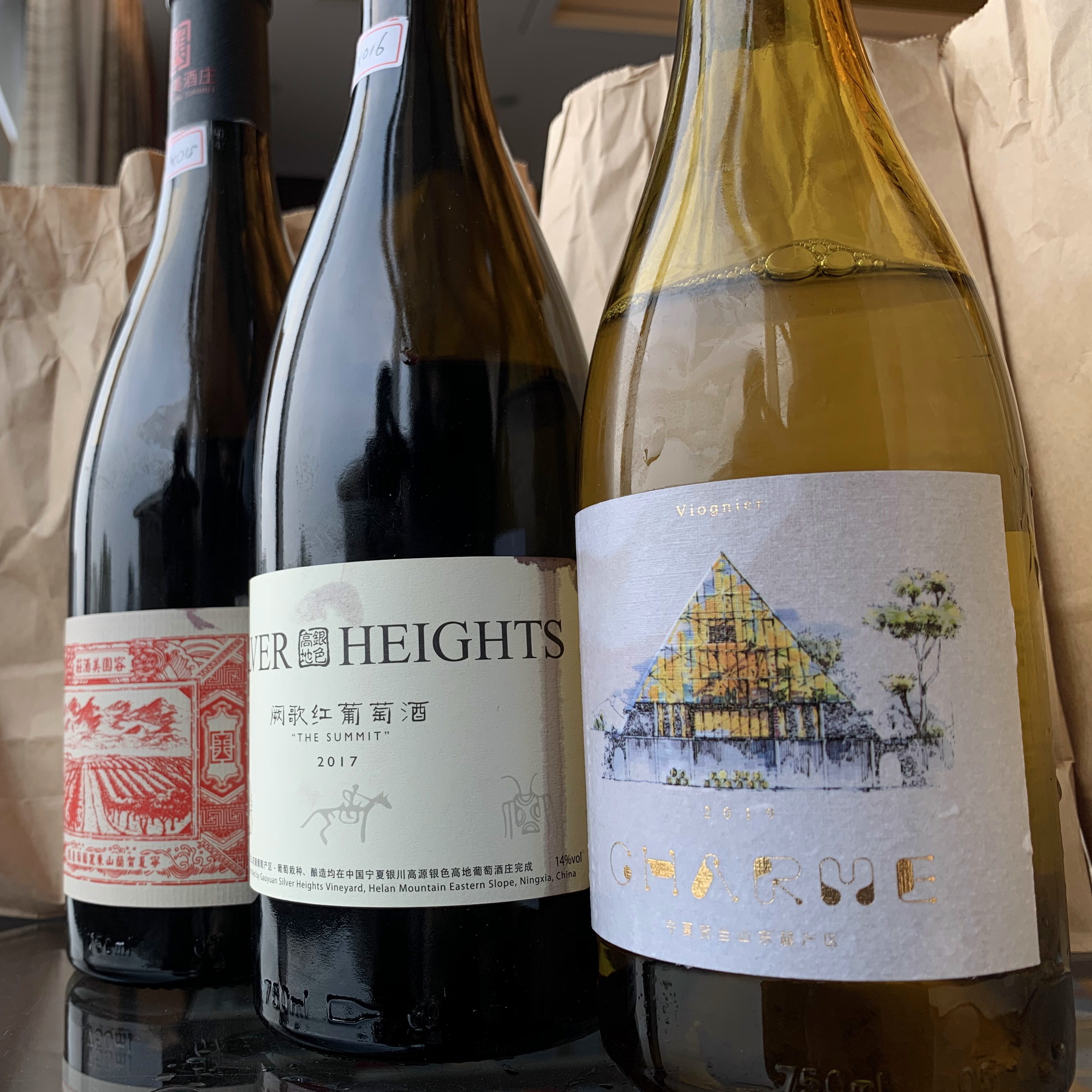


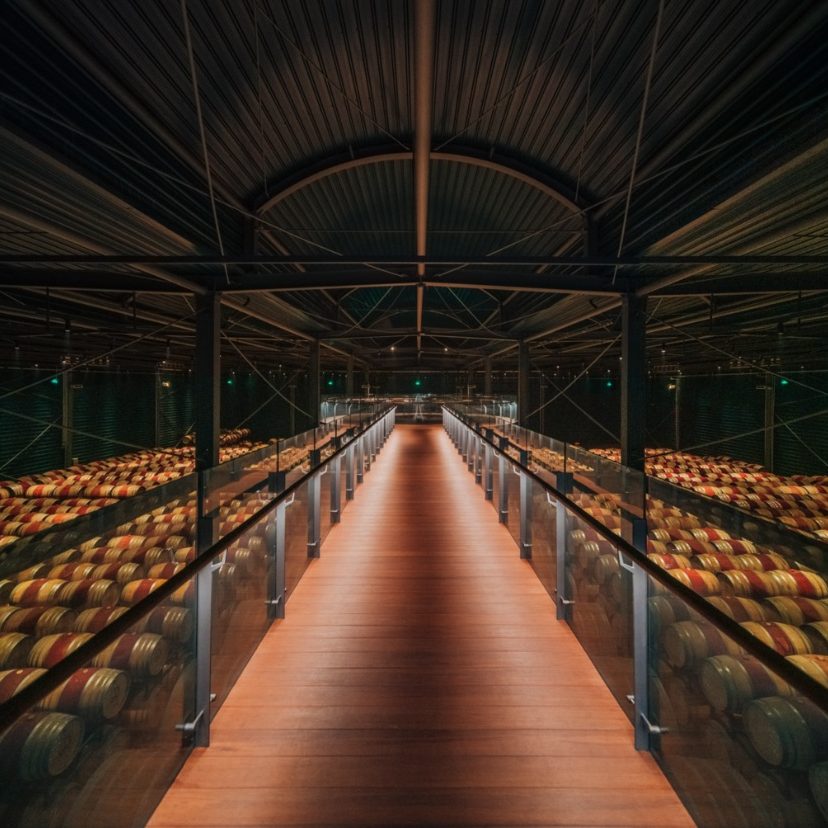
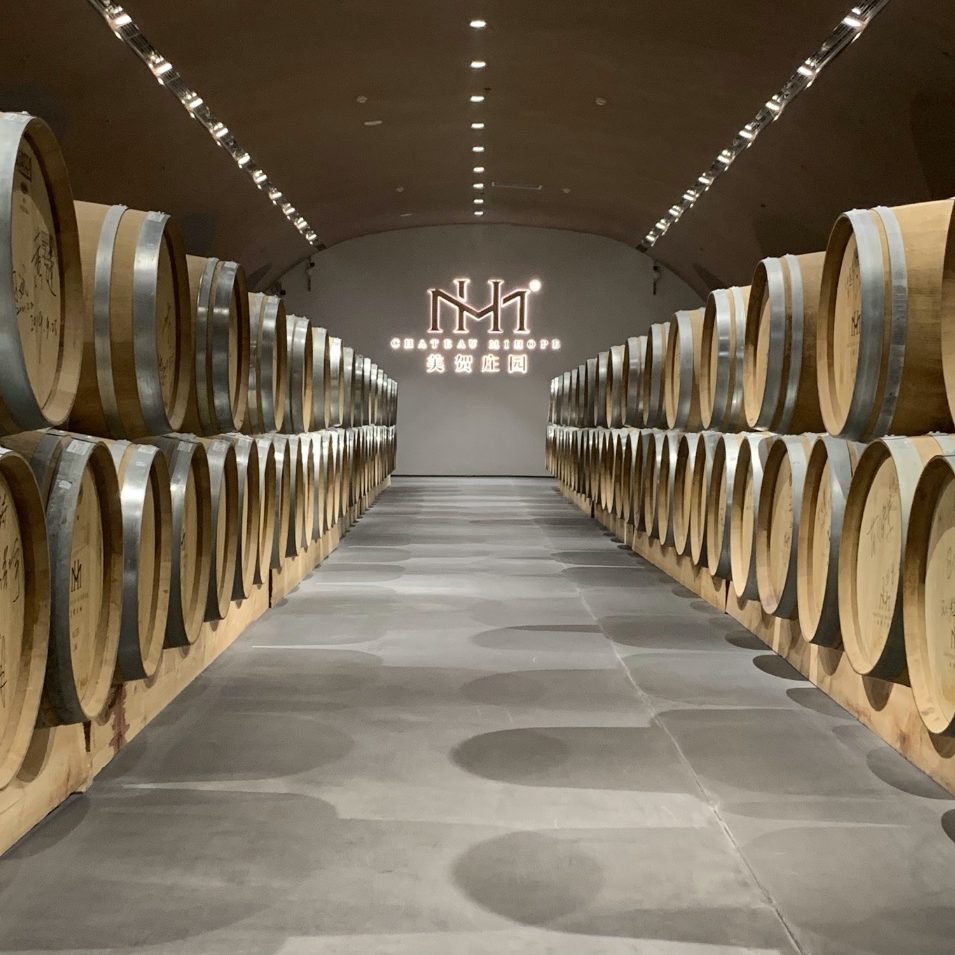
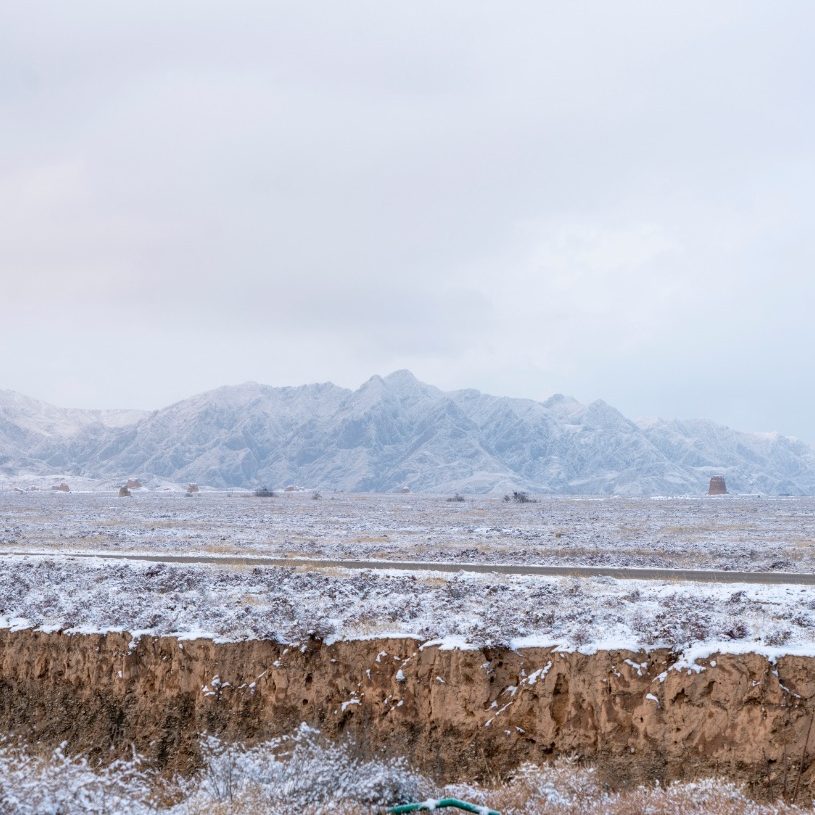
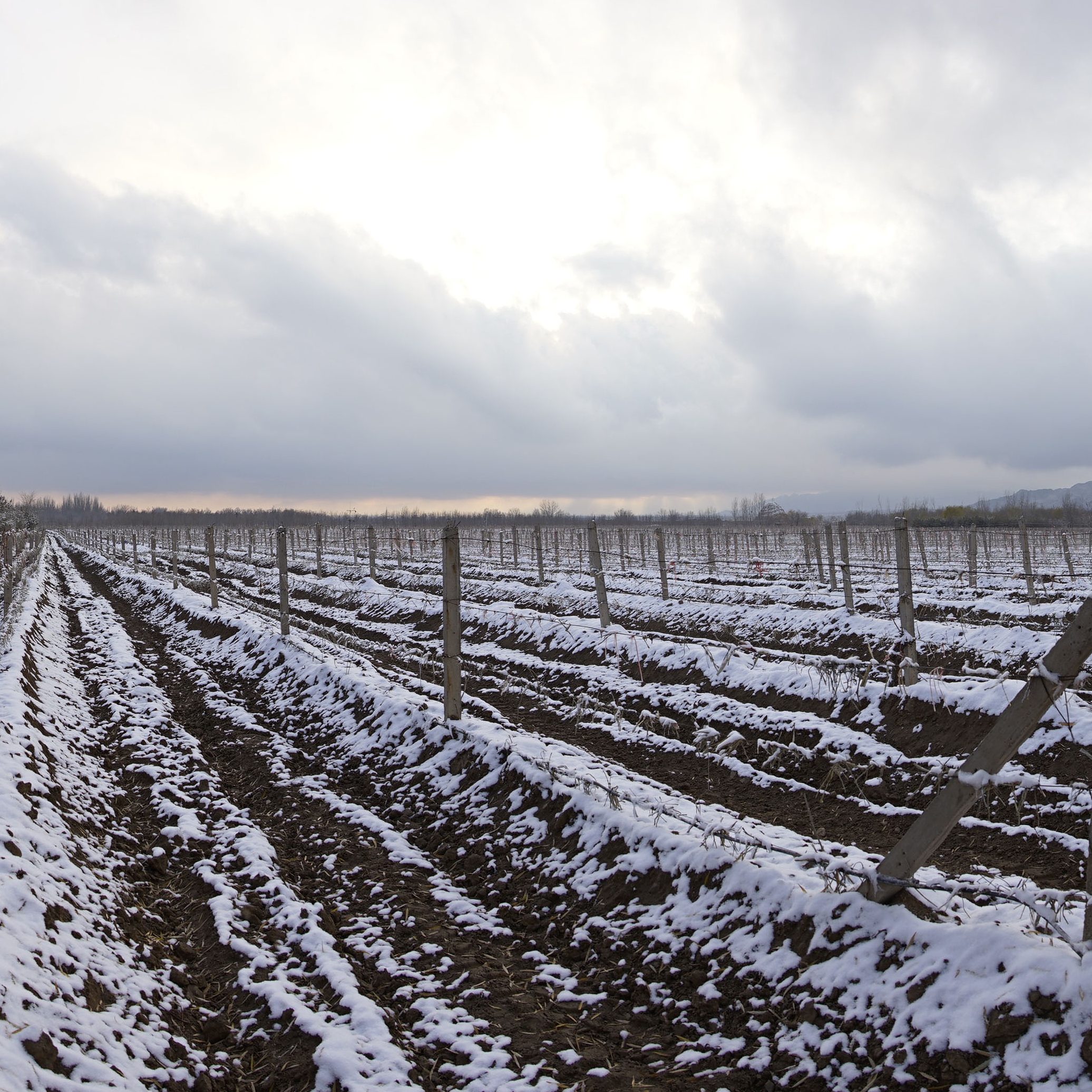

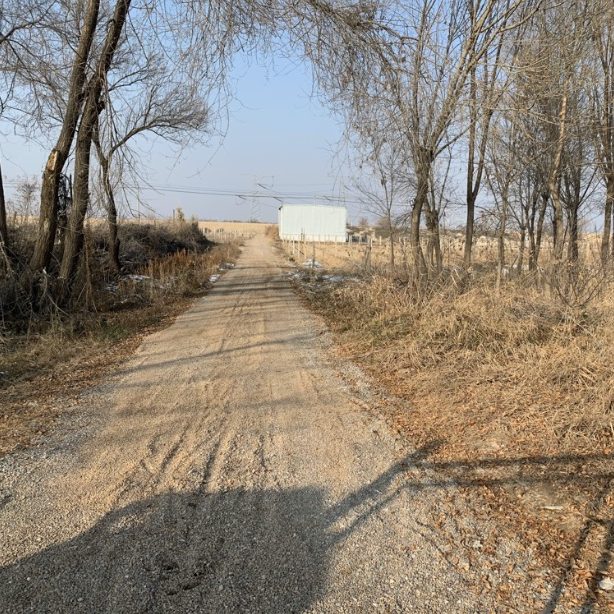 編輯:Frida Xu
編輯:Frida Xu















